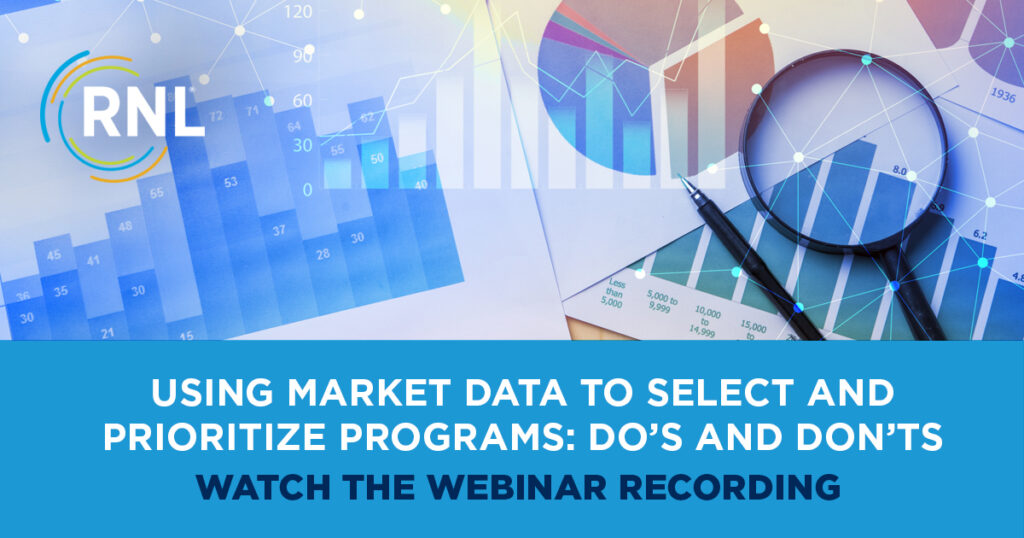enrollment
How You Should (and Shouldn’t) Use Market Data in Program Selection
It seems to me that there may be as many ways to use market data to support a new program concepts as there are institutions (or even programs). In my conversations with campus stakeholders over more than 15 years, I’ve heard just about everything. No consensus has developed on what constitutes the most effective way to leverage market data (or what data to use), but more and more institutions have begun to include it in their planning.
My own thinking on the application of market data to decision making has evolved over the last several years and, to oversimplify, I think it is at the meeting point of: accuracy, cost effectiveness, and timeliness. There are (at least) two big buckets in which current practices reside:
Primary research
Some say that the only way is to use the “gold standard” of primary market research—surveys, focus groups, and such. This scores high on “accuracy” but not so much on the “cost effective” and “timely” scales. In fact, dependent on your methodology, it can even score lower than you think on the “accuracy” scale.
Secondary research
Others say that using the secondary data that we all have access to (IPEDS, Bureau of Labor Statistics, etc.) is the way to go. These data DO offer a baseline understanding of the market factors that are most important to institutions:
- Where are degrees being generated in greatest numbers (for short-term gains); and
- Where is employer demand emerging (for longer term growth strategy).
Such analysis scores high on the “cost effective” and “timely” scales, but (dependent on how they are being used) can score far lower on the “accuracy” scale.
The do’s and don’ts of using market data
In both of these cases, it is a case of “Do’s” and “Don’ts” coupled to some really good “How To” suggestions that will make the case for successful strategy development. In our upcoming webinar Using Market Data to Inform Program Choice and Prioritization: Do’s and Don’ts, we will dig into how to get to some of the best meeting points of accuracy, cost-effectiveness, and timeliness.
Here are some of the items that we will explore in the webinar:
Do: In many cases primary market research is the step that completes the picture you need to ensure that your programs are properly positioned in the market. But there may be better ways to determine the programs that are in highest demand, and there may be more affordable ways to understand your audience than to do randomized surveys in your region.
Don’t: Among the most alarming “economizing” actions I’ve seen in using primary research focus is only conducting focus groups because they are less expensive than major survey efforts. However, this means you are making decisions affecting tens of thousands of dollars of program development on the feedback of a couple dozen people (however well informed they may be).
Don’t: I’ve been impressed in the last few years by the growth of formalized new program proposal processes that include a market research requirement. Too often, however, that “box” can be “checked” by presenting the IPEDS, BLS, and other data in support of that program. Why is this a problem? Because without context (perhaps with the same data for other programs) you can’t be sure that the numbers are positive or less positive.
Do: Secondary data can be a powerful way to underpin strategic programming decisions—whether that be what programs to focus marketing dollars on today or what new programs should be implemented in the future. These data provide a useable snapshot of current student demand and longer term employer demands. But you have to use them in a manner in which their real power than be seen.
Find more resource-saving recommendations in our webinar

These are just a few of the things that we are going to talk about in our webinar Using Market Data to Inform Program Selection and Prioritization.
All attendees will be eligible to receive a set of regional data, accompanied by a “Sherpa session” that will help them effectively apply it to their institutional efforts, so I recommend you register for the webinar.
